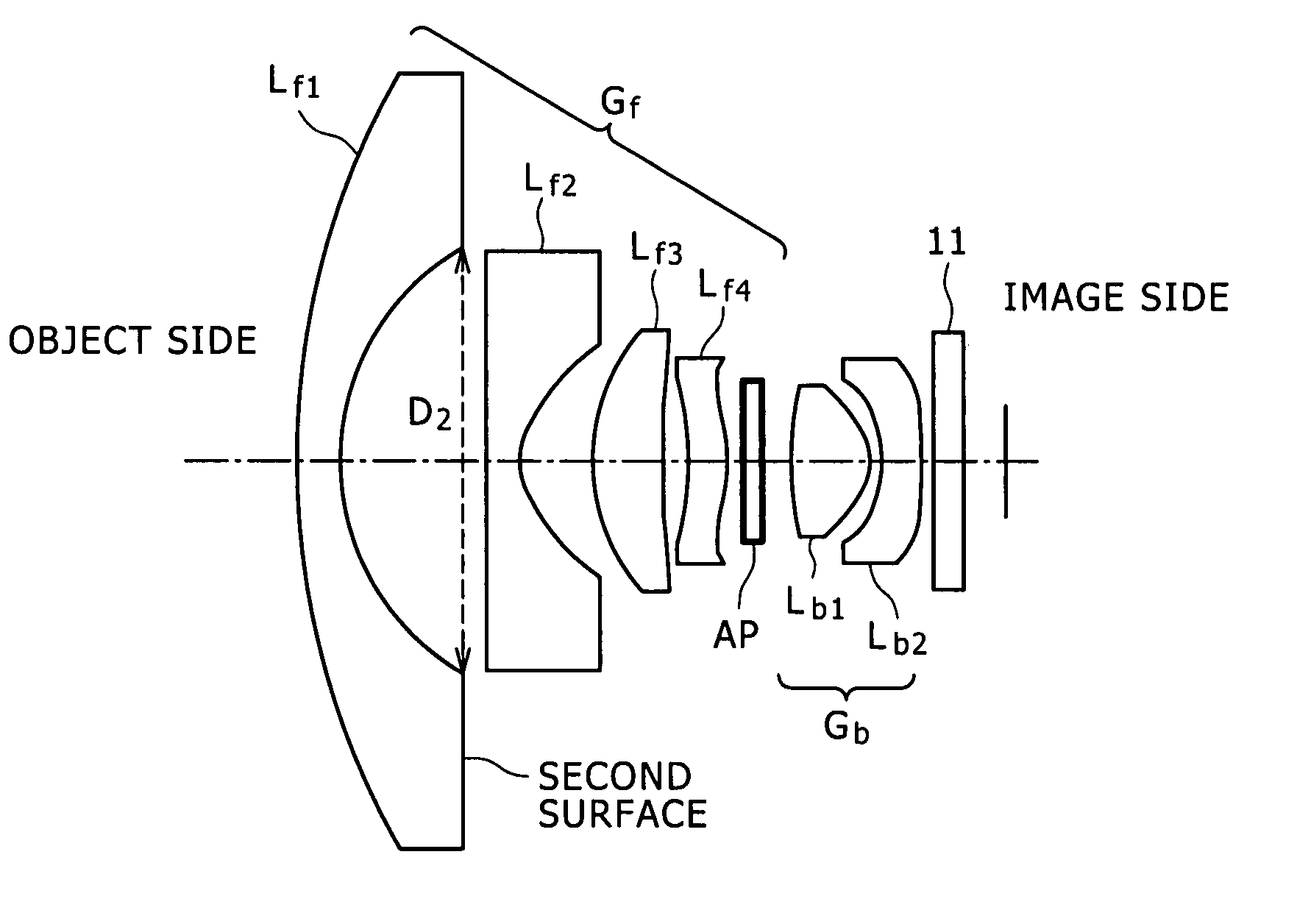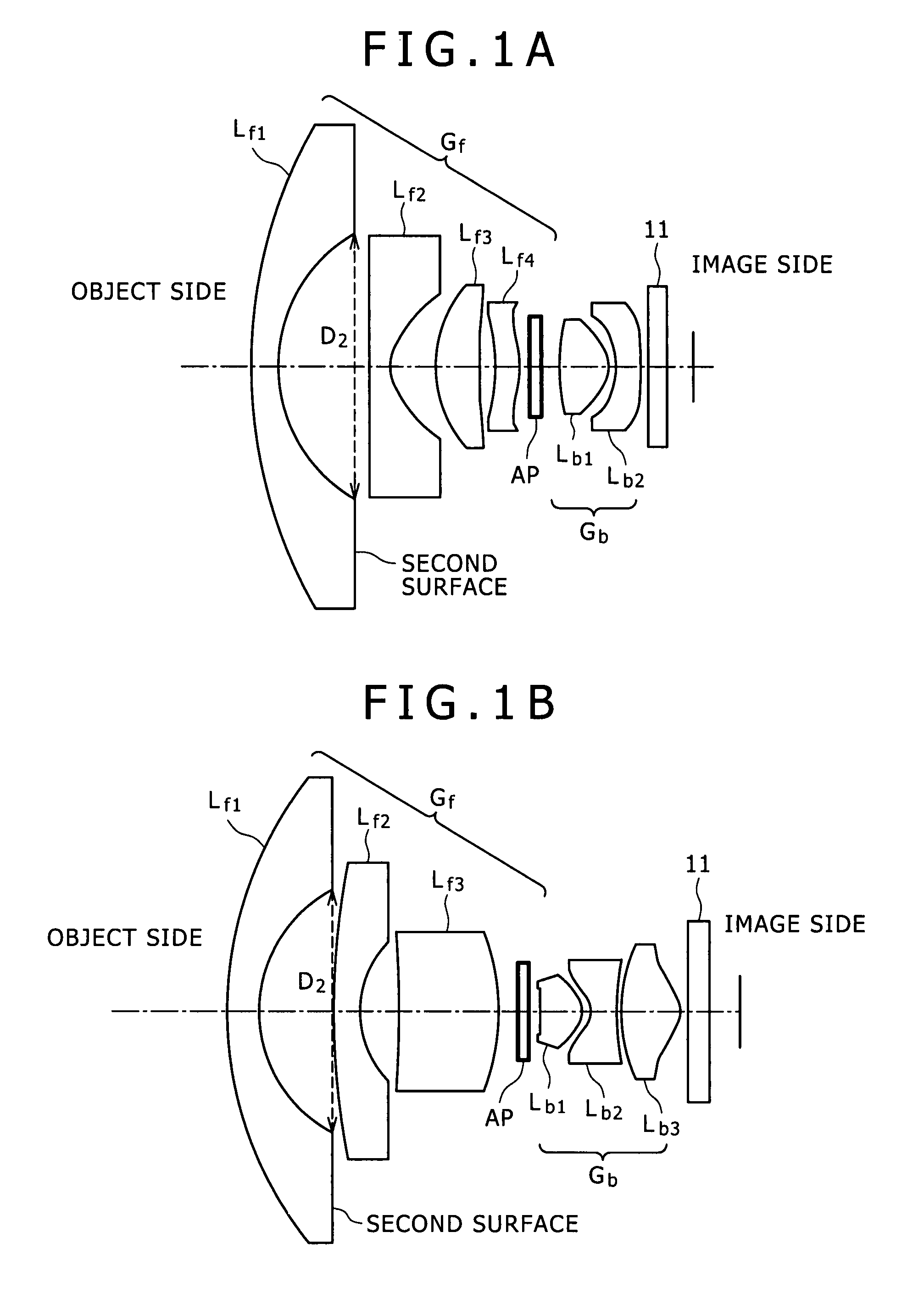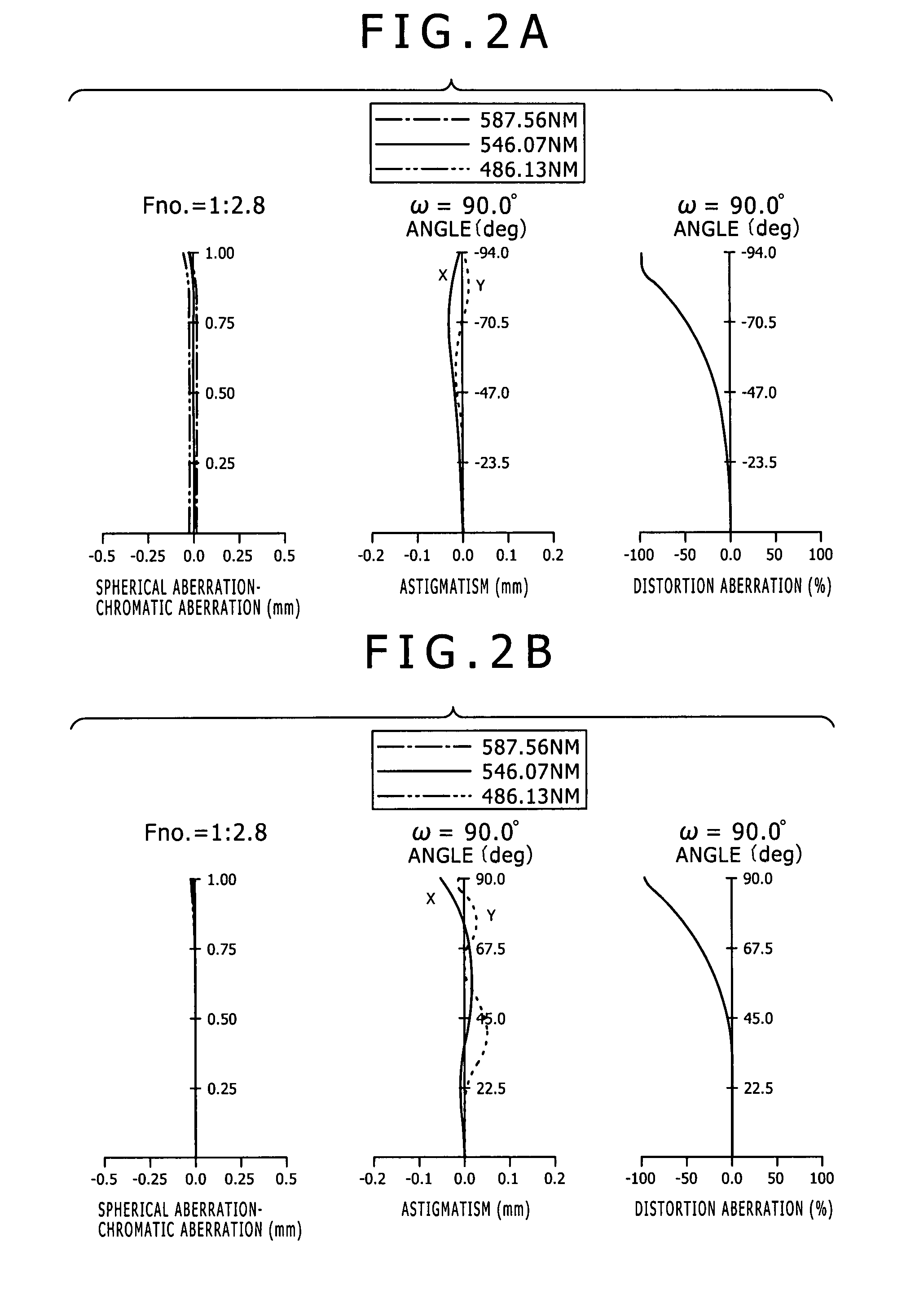Lens unit
a technology of lens unit and lens body, applied in the field of lens unit, can solve the problems of unsuitability of mass production, increased manufacturing cost, unsuitability of lens unit, etc., and achieve the effects of reducing petzval sum, low cost, and reducing aberration
- Summary
- Abstract
- Description
- Claims
- Application Information
AI Technical Summary
Benefits of technology
Problems solved by technology
Method used
Image
Examples
embodiment 1
[0064]Embodiment 1 pertains to a lens unit according to one embodiment of the present invention, specifically a lens unit according to the first mode of the invention, more particularly a fisheye lens unit. A conceptual diagram of the lens unit according Embodiment 1 is shown in FIG. 1A. The lens unit in Embodiment 1 is a 2-group 6-lens lens unit, which includes a front group Gf of lenses, a stop AP, and a back group Gb of lenses, in this order from the object side toward the image side. The front group Gf includes:
[0065](A-1) a first lens Lf1 having a negative (having negative power) meniscus shape;
[0066](A-2) a negative (having negative power) second lens Lf2 formed from a plastic and having an aspherical surface;
[0067](A-3) a positive (having positive power) third lens Lf3; and
[0068](A-4) a positive (having positive power) fourth lens Lf4,
in this order from the object side toward the image side.
In addition, the back group Gb includes:
[0069](B-1) a positive (having positive power)...
embodiment 2
[0087]Embodiment 2 is a modification of Embodiment 1, and pertains to a lens unit, specifically a fisheye lens unit, according to the second mode of the present invention. A conceptual diagram of the lens unit in Embodiment 2 is shown in FIG. 1B. The lens unit in Embodiment 2, also, is a 2-group 6-lens lens unit including a front group Gf of lenses, a stop AP, and a back group Gb of lenses, in this order from the object side toward the image side. The front group Gf includes:
[0088](A-1) a first lens Lf1 having a negative (having negative power) meniscus shape;
[0089](A-2) a negative (having negative power) second lens Lf2 formed from a plastic and having an aspherical surface; and
[0090](A-3) a positive (having positive power) third lens Lf3,
in this order from the object side toward the image side.
In addition, the back group Gb includes:
[0091](B-1) a positive (having positive power) first lens Lb1;
[0092](B-2) a negative (having negative power) second lens Lb2; and
[0093](B-3) a positiv...
PUM
 Login to View More
Login to View More Abstract
Description
Claims
Application Information
 Login to View More
Login to View More - R&D
- Intellectual Property
- Life Sciences
- Materials
- Tech Scout
- Unparalleled Data Quality
- Higher Quality Content
- 60% Fewer Hallucinations
Browse by: Latest US Patents, China's latest patents, Technical Efficacy Thesaurus, Application Domain, Technology Topic, Popular Technical Reports.
© 2025 PatSnap. All rights reserved.Legal|Privacy policy|Modern Slavery Act Transparency Statement|Sitemap|About US| Contact US: help@patsnap.com



